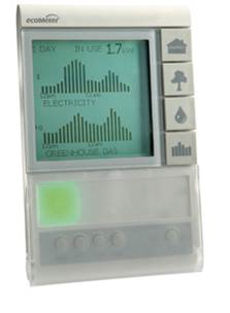Smart Meter In Utilities – The Lighthouse For Smart Computing
 Some days ago at Forrester’s IT Forum in Lisbon (June 9-11) I gave a presentation together with my colleague Andy Bartels on the IT market recovery (we predict a 9.3% IT market growth in 2010) after two economically challenging years in 2008/9. In fact, we were making the point that the market rebound we currently see is not simply a recovery but the beginning of a new IT hyper growth phase fueled by a new wave of innovation.
Some days ago at Forrester’s IT Forum in Lisbon (June 9-11) I gave a presentation together with my colleague Andy Bartels on the IT market recovery (we predict a 9.3% IT market growth in 2010) after two economically challenging years in 2008/9. In fact, we were making the point that the market rebound we currently see is not simply a recovery but the beginning of a new IT hyper growth phase fueled by a new wave of innovation.
A strong driver of this innovation is what we call Smart Computing at Forrester: the integration of physical world information into intelligent IT-supported business processes in 4 steps: Awareness (via new sensor technology), Analysis (with advanced BI solutions), Alternatives (including rules and process engines) and Action (in industry business applications), plus a 5th feedback loop of Auditability for tracking and learning.
A well-known example of smart computing solutions is smart metering in the Utilities industry. In another presentation in Lisbon, a colleague asked the audience, a room full with all the leading IT service companies, who all had an initiative running with smart metering – everyone in the room raised their hands. Then he asked who actually had more than 1-3 (pilot) projects running – and almost no one raised their hand.
Is smart metering just hype that everyone is jumping on or what is the reality of the lighthouse example of smart computing at this point in time?
In order to get some answers, I went to SAP’s Utilities Conference in Brussels the next week (June 15-16). With more than 400 participants, the event was well attended, and many of the service providers I met in Lisbon had a booth at the exhibition next to meter manufacturers, mobile solution providers and other partners in SAP’s Utilities vertical.
Smart Meter Is A Big, Maturing Market Opportunity
With everyone jumping onto smart meters, let’s do a quick check on the actual market size for this opportunity. Depending on the kind of solution, from simple remote meter reading to bi-directional, interactive demand site management, the cost to install and connect one meter into an overall network and solution ranges from ~€100-250 per meter (that’s what a utilities company might charge to the customer). A big chunk of that goes to the installation services (~40%) and the meter itself (~30%), which leaves roughly 30% or €30+ per meter for additional IT solutions and services. With more than 200 million households to supply and connect with smart meters in Europe (smart meter is currently mainly kicking off in Europe), this is a significant €6b+ IT market that can feed a number of IT vendors over the next years. So far, a concrete number of 26 projects by DSOs and TSOs are planned in Europe, with a total volume of €2b in the next 8 years. We already see a significant number of successful projects around the globe, including, e.g., Centrica (UK), EKZ (CH), EnBW (GER), Bluebonnet (US) and AGL (AU) based on SAP’s infrastructure concept, which seems to become the reference architecture in the smart meter market. Indeed, smart meter is a huge market opportunity – and it is ripe to grab it.
From Smart Meter To Smart Grid
However, while everyone is talking about smart meter, it is only the initial cornerstone to the larger concept of smart grids. In order to achieve the European energy policy goals by 2020 (20% less demand, 20% less carbon emission and 20% renewable), all elements along the energy value chain from power generation to transmission, distribution and retailing need to become ‘smarter’. The figure shows the steps of changing paradigms that need to be implemented to get to a true international smart grid solution.

At the lowest level, smart meter technology will enable change in consumer behavior. Demand site management, currently mainly pushed in the US via governmental stimulus programs will enable consumers to actively participate and control their energy demand. On the next level, consumers become producers at the same time, which significantly changes the business model between utility companies and their customers becoming ‘partners’. The third layer adds the complexity of mobility. Electric cars (and other devices) will connect to charge, store (and generate) energy at changing locations. ‘Energy roaming’ will become a possible concept in the utilities industry. Bringing these elements together will create a smart grid that will work first on a local/country basis but will eventually expand across countries to become the ‘internet of energy’.
SAP’s Utilities Conference was a strong proof point that smart meter is a very active, maturing technology and business today with a lot of additional, future potential. It has confirmed our view at Forrester that we are at the beginning of a new wave of IT innovation with smart computing being the key element that fuels the growth.
Please leave a comment or contact me directly.
Kind regards,
Holger Kisker